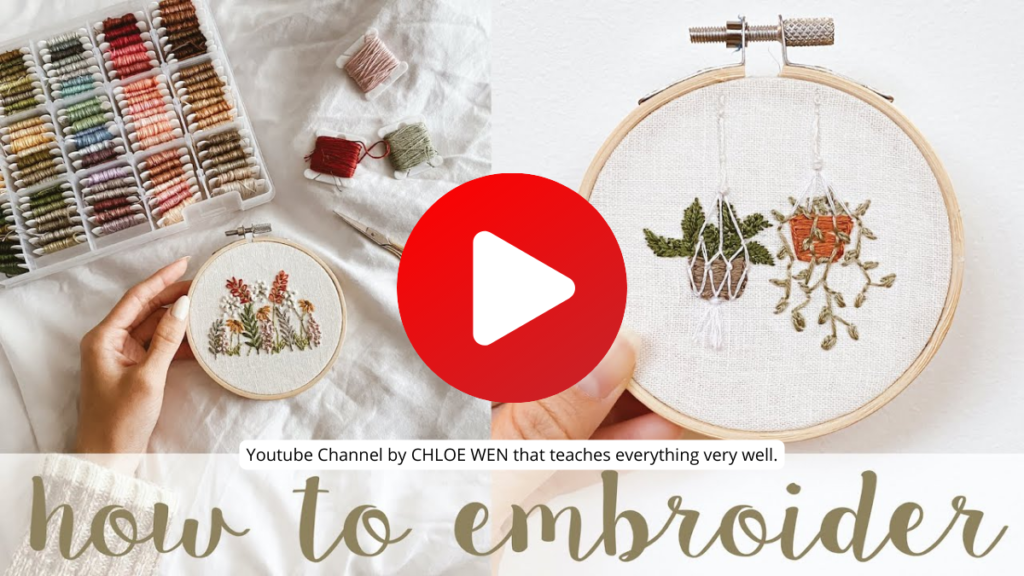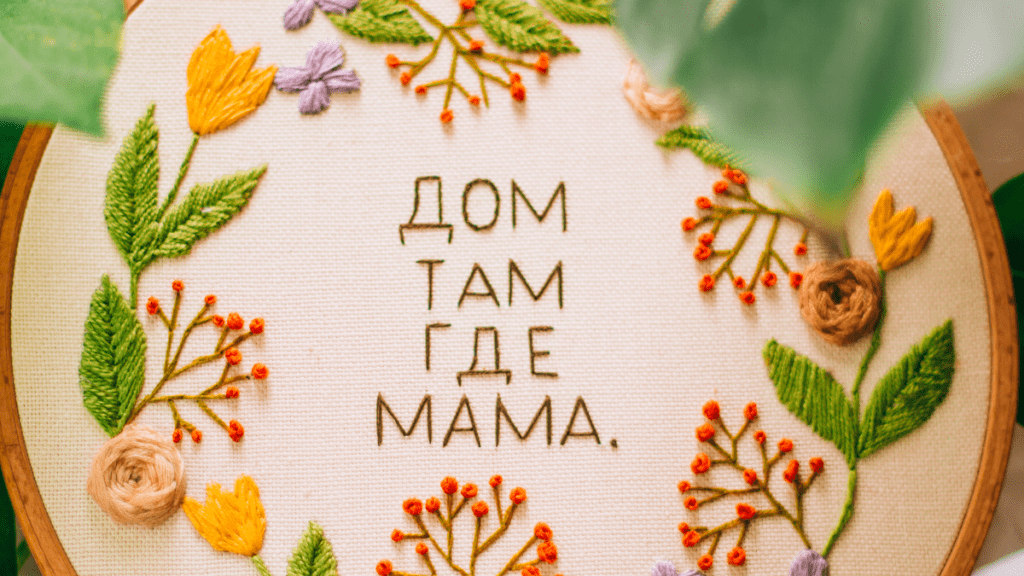Learn how to embroidery for beginners with this basic guide including a super video lesson that will help you get started with this wonderful craft.
Embroidery, a timeless craft, has captured the hearts of many for centuries. Whether you’re looking for a new hobby, a way to personalize items, or even a potential side business, embroidery offers endless creative possibilities.
This beginner’s guide will walk you through the essentials, helping you take your first steps into the world of embroidery.
What is Embroidery?
Embroidery is the art of decorating fabric using a needle and thread (or yarn). It can range from simple stitches to intricate designs, adding texture and dimension to clothing, home decor, and accessories.
Embroidery for Beginners: Complete guide with video class.
Embroidery is both relaxing and rewarding. It’s an affordable craft that doesn’t require much space or expensive materials to get started. Plus, it’s portable—you can easily carry your embroidery project anywhere.
Materials You’ll Need
Before diving into embroidery for beginners, here are the essential tools and materials you’ll need:
- Embroidery Hoop: This holds the fabric taut, making it easier to work on your design. Hoops come in various sizes; a 6-inch hoop is a good starting point.
- Needles: Embroidery needles have a larger eye to accommodate the thicker embroidery threads. A variety pack will give you options to experiment with different thread thicknesses.
- Fabric: Start with light, non-stretch fabrics like cotton or linen. These are easier to work with and allow you to see your stitches clearly.
- Embroidery Floss: This is the thread used in embroidery, typically made of six strands. Beginners often use cotton floss, available in a wide range of colors.
- Scissors: A small pair of sharp scissors is essential for trimming threads.
- Water-Soluble Marking Pen: This is helpful for drawing your design on fabric before stitching.
Basic Stitches to Learn embroidery for beginners
Embroidery for beginners involves various stitches, each creating a different effect. Here are three foundational stitches every beginner should master:
- Running Stitch: This simple stitch is used for outlining designs. You weave the needle in and out of the fabric, creating a dashed line.
- Backstitch: Great for outlines and lettering, the backstitch creates a continuous line by looping back on the stitch you’ve just made.
- Satin Stitch: This is used to fill in areas with solid color. The stitches are placed closely together, creating a smooth surface.
Complete Embroidery Class for Beginners
Before we talk about the first project, I want to recommend a video lesson. Although I have listed an entire guide, complementing it with a video lesson is super important in your learning embroidery for beginners.
To do this, I selected the tutorial from the Youtube Channel by CHLOE WEN that teaches everything very well.

Starting Your First Project
Once you’ve gathered your materials and practiced some stitches, it’s time to start a project. Here’s a simple process to follow:
- Choose a Design: Beginners should start with simple patterns like flowers, geometric shapes, or simple phrases.
- Transfer the Design: Use your water-soluble marker to trace the design onto your fabric.
- Hoop Your Fabric: Place your fabric in the embroidery hoop, making sure it’s taut but not stretched.
- Start Stitching: Begin with the outline of your design, using a running or backstitch. Then, fill in areas with the satin stitch if needed.
- Finish and Clean Up: Once your design is complete, knot the thread on the back of the fabric to secure it. If you used a water-soluble marker, rinse the fabric to remove any visible lines.
Tips for Success
- Practice Patience: Embroidery requires time and practice. Start with small projects and gradually work your way up to more complex designs.
- Maintain Consistent Tension: Keep your stitches even, but avoid pulling the thread too tight as it can distort the fabric.
- Experiment with Colors: Playing with different thread colors and textures can add depth and interest to your designs.
Exploring Beyond Basics
As you grow more confident, you can explore more complex stitches, like the French knot, chain stitch, and lazy daisy. You might also venture into more detailed designs or try different fabric types.
Embroidery for Relaxation and Creativity
One of the greatest benefits of embroidery for beginners is how meditative it can be. The repetitive motion of stitching can be calming, making it a great stress-reliever. Plus, it’s incredibly satisfying to watch a design come to life stitch by stitch.
Embroidery is an accessible and enjoyable craft that allows you to create beautiful pieces from scratch.
With just a few materials and some practice, you’ll soon be making custom designs for yourself, your home, or as thoughtful handmade gifts for others. So pick up a needle, thread some floss, and let your creativity flow!
Reado more: 10 Tips for Making Money Selling Embroidery


